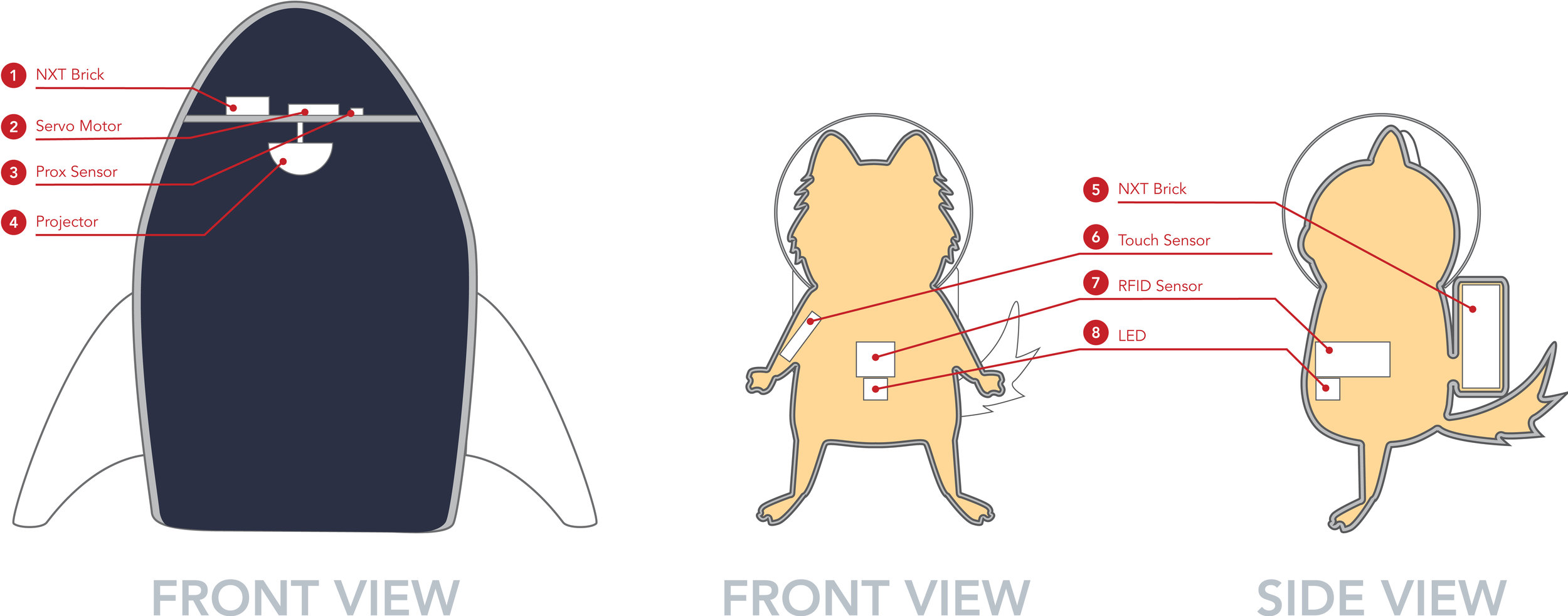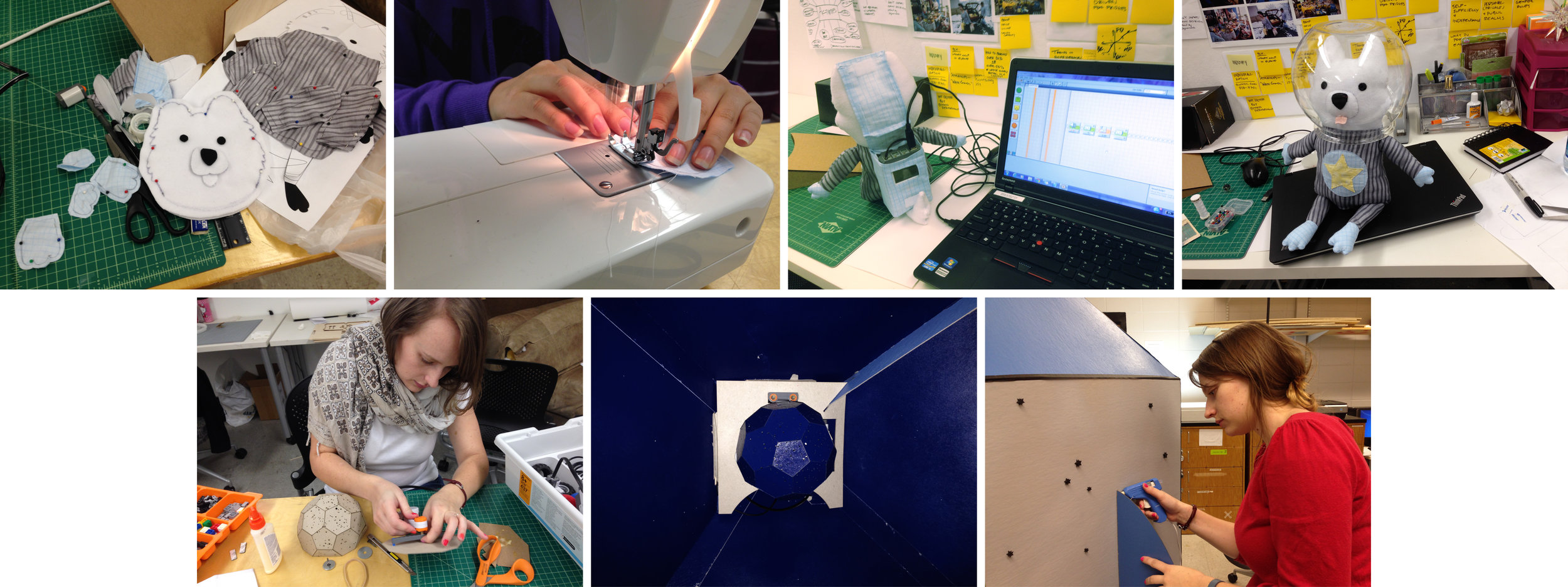WITH: Alison McKenna
RESPONSIBILITIES: Primary research, problem development, storyboarding, ideation, prototyping
BACKGROUND
This project was intended as an introduction into coding and building with Lego Mindstorms, and an introduction to interactive products in general. We had seen many Mindstorms projects produce impressive machines, but had hardly seen them embedded in soft goods.
We decided we wanted to explore this new territory.
FIRST ITERATION
We knew we wanted the soft goods to be a plush toy to hide the clunky electronics and make a more realistic-looking product. However, the large NXT brick, which serves as the brain to any Mindstorms project, proved difficult to incorporate.
REFRAMING & RESEARCH
As we brainstormed, we realized many of our concepts needed accoutrements. That prompted the idea that the toy should have a function beyond just being interactive. We wanted something that was also educational.
We researched learning models for young children who would conceivably still play with stuffed animals, which were broken down into seven categories.
SECOND ITERATION
With cognitive development in mind, we revisited our previous concepts.
We combined a few ideas and landed on using the astronaut puppy as the plush to hide an RFID reader, along with RFID tag stars that could be stuck to any wall. The spacesuit design also incorporated the NXT brick well.
LEARNING MODELS
By mapping each star to a unique musical note, children could use their auditory-musical and logical-mathematical cognition to discover how to make their own music.
However, we realized we could take it a step further. Instead of letting the stars be placed anywhere randomly, we could incorporate visual-spatial thinking by matching the stars’ positions to their pitch. In order for the correspondence between the two to be clear and consistent, the stars had to stay stationary.
REFINEMENT
Having the stars stay consistent meant that we needed to split the toy into two parts that worked in tandem with each other: the plush and the star wall.
Rather than just a wall, we decided to add an immersive element and turn the wall into a star-studded rocket ship playhouse, complete with its own lights and sounds.
SCENARIO STORYBOARD
INTERACTION CODING
SECTION CUT DIAGRAMS
The electronics in the rocket ship were housed in a support shelf that had a cutaway for easy access. The RFID reader and LED in AstroPup’s belly were located behind the star. His backpack contained the NXT brick, accessible by lifting the flap.
PROTOTYPING: WORKS-LIKE MODEL
We first built a works-like model to test code, circuitry, sensors, and actuators before combining them into our final prototype.
PROTYPING: FULL MODEL
FUNCTIONALITY & INTERACTION
ASTROPUP OVERVIEW VIDEO
FUTURE STEPS
I would love for AstroPup to be expanded into a whole line of toys with different themes. Different costumes would change the nature of the interactions.














